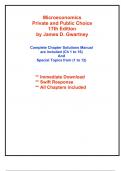Samenvatting
Samenvatting Making Sense of Change Management, 9780749496975 Change Management And Leadership
- Instelling
- Universiteit Twente (UT)
This detailed and informative summary contains the first four chapters of the book; clear tables and schemes to make your studying easier.
[Meer zien]














